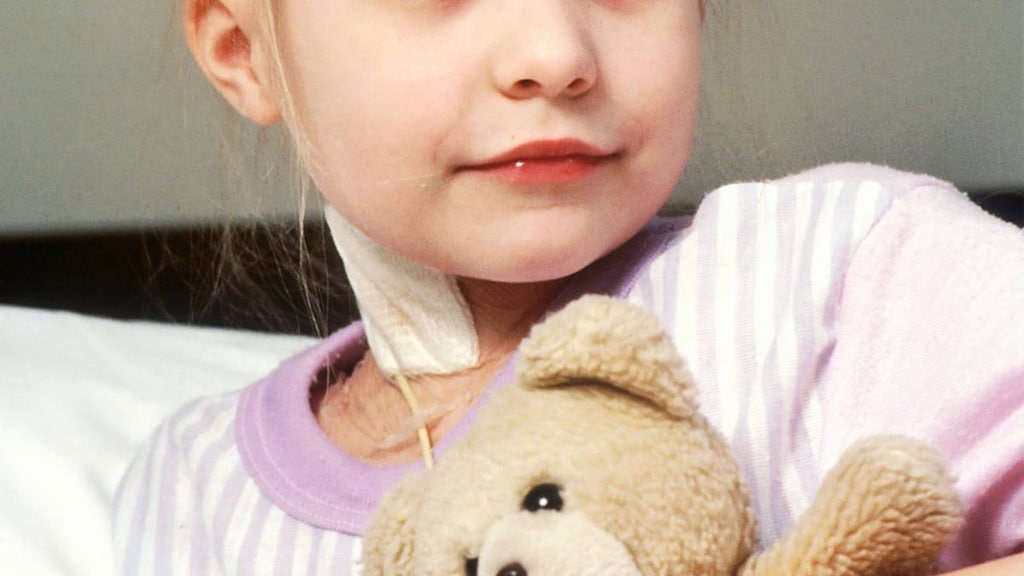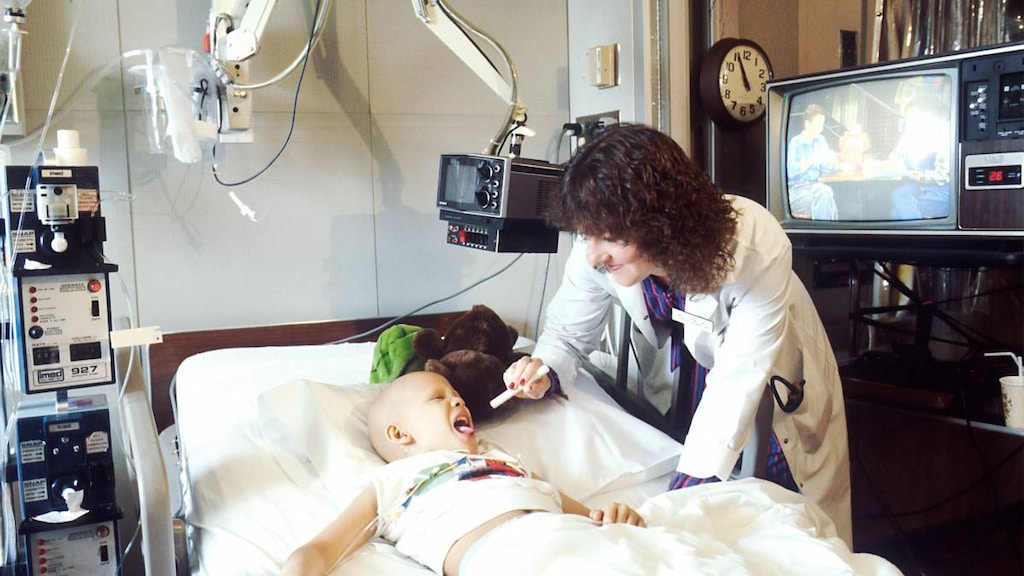Leukemia: Understanding the Basics

Leukemia is a type of blood cancer that interferes with the body’s ability to produce normal types of white blood cells. One person is diagnosed with leukemia or another form of blood cancer about every three minutes in the United States, the Leukemia & Lymphoma Society says, and more than 150,000 people are diagnosed with blood diseases each year.
Though far more adults are diagnosed with leukemia than children, the disease is the most common form of childhood cancer. A type of leukemia called acute lymphoblastic leukemia (ALL) makes up about 75 percent of leukemia diagnoses among children. Among adults, the most common form is acute myeloid leukemia (AML).
Leukemia forms in the bone marrow, which is the spongy center of the bones where different blood cells, such as white blood cells, red blood cells and platelets, are produced. It typically affects white blood cells (usually lymphocytes and granulocytes) but can also affect other types of blood cells. Lymphocyte-related leukemias are referred to as lymphocytic leukemias. Leukemias stemming from granulocytes are referred to as myeloid or myelogenous leukemias.
Leukemia can strike out of the blue and be a one-time occurrence (acute leukemia) or can persist for a long period of time (chronic leukemia). The former affects children and adults, while the latter mostly affects adults.
Overall, the disease is more common among men and affects whites more so than other ethnic and racial groups.
If your doctor suspects you may have leukemia, based on your symptoms and the results of a physical exam, you may have blood tests to look for abnormal cells and possibly a bone marrow biopsy and genetic tests, to help determine the type of leukemia. If a diagnosis is confirmed, treatment will depend on such factors as your age, the stage at which the disease is diagnosed and the type of leukemia you have.
Types of leukemia
Leukemias are categorized based on how rapidly they develop and by cell type.
With acute leukemia, young white blood cells called blasts develop too quickly, which can rapidly lead to dire symptoms. By contrast, with chronic leukemia, the cancerous cells develop at a slower rate and there may be no symptoms for years.
Myeloid leukemias form in white blood cells called monocytes and neutrophils, whereas lymphocytic leukemias form in T lymphocytes, B lymphocytes or natural killer (NK) cells. All of these cell types are involved in fighting off infections.
There are four principal types of leukemia: acute myeloid leukemia (AML), acute lymphoblastic leukemia (ALL), chronic myeloid leukemia (CML) and chronic lymphocytic leukemia (CLL).
Acute myeloid leukemia (AML)
This type occurs when the DNA of immature blood cells (myeloid blasts or myeloblasts) is damaged. This damage causes the cells to stop developing rather than developing into mature, healthy white blood cells. The abnormal myeloblasts also interfere with the production of other blood cells and platelets. With fewer platelets, the blood has difficulty clotting, putting the person affected at risk for bleeding and bruising. The lack of healthy white blood cells puts the affected person at risk for serious infection. The lack of red blood cells, also known as anemia, can cause pallor, shortness of breath and fatigue.
Because blood travels throughout the body, AML can spread to such places as the lymph nodes, liver and skin.
Symptoms of AML include bleeding, bruising, bone and joint pain, recurrent fevers and infections, chest pain, swollen lymph nodes and difficulty breathing.
An estimated 21,450 people were diagnosed with AML in 2019, according to the National Cancer Institute. The disease is typically diagnosed in people older than 40 and is most common in those older than 65. It is more common in men than women, and relatively rare among children.
Acute lymphoblastic leukemia (ALL)
Acute lymphoblastic leukemia (ALL) occurs when the DNA of lymphocyte blast cells becomes damaged, preventing the blasts from developing into mature white blood cells capable of fighting infection. When the number of lymphocyte blasts increase in the bone marrow and blood, this interferes with the production of normal blood cells and platelets and there is less room for healthy blood cells and platelets.
Symptoms of ALL include anemia, fatigue, bleeding, bruising, bone and joint pain, recurrent fevers and infections, abdominal pain, swollen lymph nodes and difficulty breathing.
The anemia, fatigue and shortness of breath are due to the lack of normal red blood cells. As with AML, the lack of platelets can cause bleeding or bruising, and the lack of white blood cells places those affected at risk for serious infection. Also like AML, the fact that ALL is a blood cancer means that it can easily spread to other organs.
While ALL is not believed to be an inherited form of cancer, certain diseases in which genetic alterations take place, such as Down syndrome and Bloom syndrome, can increase a person’s risk for ALL.
Adults with ALL do not respond as well to treatment as children.
An estimated 5,930 people were diagnosed with ALL in 2019, according to the National Cancer Institute. It occurs most frequently in children younger than 10. On average, adults with ALL are diagnosed at about age 65.
Chronic myeloid leukemia (CML)
Chronic myeloid leukemia (CML) mainly affects adults, and more than 50 percent of CML diagnoses occur in people age 65 or older, the Columbia University Irving Medical Center says.
The disease is rare among children. In 2019, the National Cancer Institute reports, an estimated 8,990 people were diagnosed with CML.
In CML, too many blood stem cells become an abnormal type of white blood cell, also known as granulocytes. Since these abnormal granulocytes or leukemia cells do not become healthy white blood cells, they can build up in the blood and bone marrow, making less room for the healthy white blood cells, red blood cells and platelets. CML occurs when certain chromosomes exchange information during the process of cell division. This damages one of the chromosomes, known as the Philadelphia chromosome. The process also produces a gene that leads to overproduction of myeloid white blood cells in the bone marrow.
Symptoms of CML may include fever, night sweats, tiredness, unexplained weight loss and pain below the left ribs.
There are three phases of CML — chronic, accelerated and blastic — determined by the number of blasts present in the bone marrow, as well as other factors. Determining the phase of CML is important when deciding which treatments would be most effective.
Chronic lymphocytic leukemia (CLL)
Chronic lymphocytic leukemia (CLL) is a form of cancer in which a certain type of white blood cell is altered in a way that causes too many lymphocytes to be produced.
Like AML and ALL, CLL occurs when the DNA of blasts becomes damaged, preventing the blasts from developing into mature blood cells capable of fighting infection. Also like AML and ALL, this interferes with the production of normal blood cells and platelets. As a result, those affected often experience anemia, fatigue and shortness of breath due to the lack of normal red blood cells, the lack of platelets can cause bleeding or bruising and the lack of white blood cells can lead to serious infection.
Other symptoms of CLL can include weakness, fevers, recurrent infections, enlarged lymph nodes, pain in the upper abdomen and weight loss.
CLL progresses slowly. In many but not all cases, there are no symptoms for years. When the disease does progress quickly, it is very important that treatment commence immediately. Tests performed at the time of diagnosis can help your medical team determine how quickly the disease will progress and which treatment will be most effective.
CLL mostly affects the elderly; it is rarely diagnosed in people younger than 40 and is exceptionally rare among children. The National Cancer Institute estimated that 20,720 new diagnoses of CLL were made in 2019.
Article references
- Harvard Health Publishing, Leukemia Overview https://www.health.harvard.edu/a_to_z/leukemia-overview-a-to-z
- Leukemia & Lymphoma Society, Facts and Statistics https://www.lls.org/facts-and-statistics/facts-and-statistics-overview
- National Cancer Institute, Leukemia Overview https://www.cancer.gov/types/leukemia
- Columbia University Irving Medical Center, Leukemia Classifications https://cancer.columbia.edu/leukemia-classifications
- Columbia University Irving Medical Center, Acute myeloid leukemia (AML) https://cancer.columbia.edu/node/12796
- Columbia University Irving Medical Center, Acute lymphoblastic leukemia (ALL) https://cancer.columbia.edu/leukemia-acute-lymphoblastic-leukemia-all
- Columbia University Irving Medical Center, Chronic myeloid leukemia (CML) https://cancer.columbia.edu/node/12806
- Columbia University Irving Medical Center, Chronic lymphocytic leukemia (CLL) https://cancer.columbia.edu/node/12811
- Memorial Sloan Kettering Cancer Center, Acute Myeloid Leukemia https://www.mskcc.org/cancer-care/types/leukemias/types/acute-myeloid-leukemia-aml
- Johns Hopkins Medicine, Acute Myelogenous Leukemia (AML) Symptoms https://www.hopkinsmedicine.org/health/conditions-and-diseases/leukemia/acute-myelogenous-leukemia
- Children’s Hospital of Philadelphia, Acute Lymphoblastic Leukemia https://www.chop.edu/conditions-diseases/acute-lymphoblastic-leukemia-all
- Children’s Hospital of Philadelphia, Chronic Myelogenous Leukemia https://www.chop.edu/conditions-diseases/chronic-myelogenous-leukemia-cml
- University of Rochester Medical Center, Chronic Lymphocytic Leukemia (CLL): Symptoms https://www.urmc.rochester.edu/encyclopedia/content.aspx?contenttypeid=34&contentid=BCLLT21
- Dana-Farber Cancer Institute, Acute Lymphoblastic Leukemia (ALL) in Children http://www.danafarberbostonchildrens.org/conditions/leukemia-and-lymphoma/acute-lymphoblastic-leukemia.aspx
- National Cancer Institute, Cancer Stat Facts (ALM) https://seer.cancer.gov/statfacts/html/amyl.html
- National Cancer Institute, Cancer Stat Facts (ALL) https://seer.cancer.gov/statfacts/html/alyl.html
- National Cancer Institute, Cancer Stat Facts (CLM) https://seer.cancer.gov/statfacts/html/cmyl.html
- National Cancer Institute, Chronic Myelogenous Leukemia Treatment https://www.cancer.gov/types/leukemia/patient/cml-treatment-pdq
- National Cancer Institute, Cancer Stat Facts (CLL) https://seer.cancer.gov/statfacts/html/clyl.html


